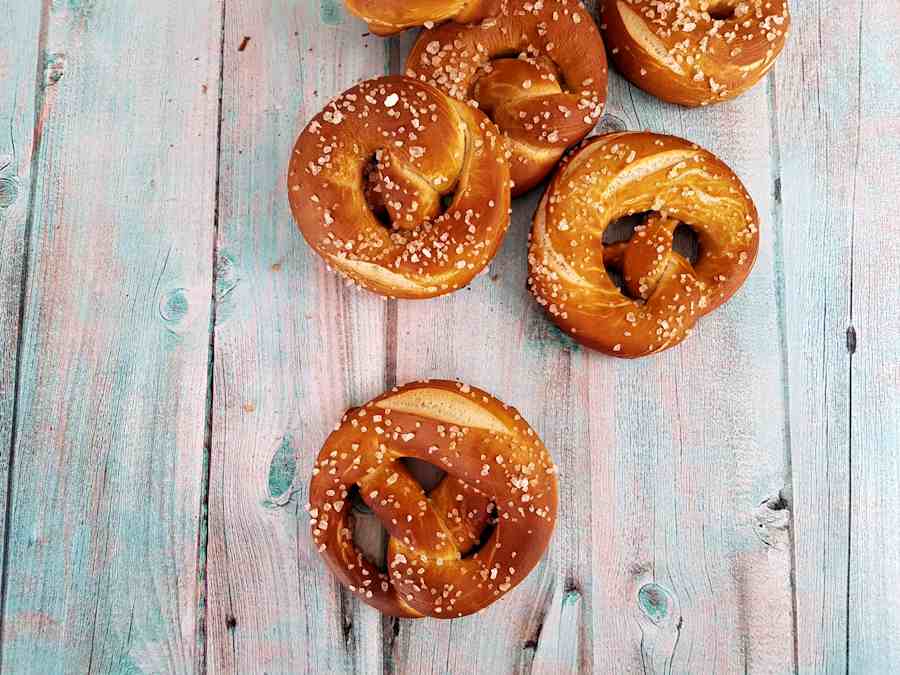Pretzels: brown, glossy and crunchy with salt, coiled into a praying monk’s figure are almost fit for Hofbrauhaus next Oktoberfest!

Hofbräuhaus in Munich is a vast hangar of a tavern. Beer flows by gallon-sized steins, there’s Bratwurst and Weißwurst, Sauerkraut and schnitzeln, Bratkartoffeln and Spreewälder Gurken but my best food memory is pretzels – or Laugenbretzeln as they should properly be known as. Carried around by buxom waitresses capable of holding a string of those in one hand and a large bunch of 2-litre steins in the other.
Crusted with salt and a lot of it, shiny and brown-glossy with perfect chewiness inside, those pretzels were nothing like my childhood memories of church fêtes with dry, tooth breaking and bland twists the size of a car wheel; or cracker selection boxes with the mini pretzels compartment the only one always left intact. Hofbräuhaus diametrically changed my pretzel perception.

Laugenbretzeln, literally ‘lye pretzels’ are called thus because the glossy brown colour and incomparable flavour come from dipping the breads in a sodium hydroxide solution before baking; which of course must be my favourite kind of food story of a horrible accident ending in a culinary triumph. Lye, being a strong alkaline, is such a risky substance to work with that we home cooks often resort to sodium bicarbonate pretending it’s the same thing. It isn’t and it won’t give you the same exact wonderful results but it’s an acceptable half-measure. Especially considering my only previous experience with lye ended with having to replace bathroom sink (don’t ask – but don’t pour UNDILUTED lye down the sink to unblock it), I’d rather be safe and inauthentic.

Pretzels are made from bread dough, using baker’s yeast or a sourdough starter. This here is a simple, yeasted dough recipe but if you’re in the know and have sour starter in supply, use it instead of yeast, refreshed at 100% hydration with wheat flour, in amount of up to 25% of total bulk.
And finally, the twisting. It’s supposed to represent a praying figure, with arms crossed over the chest rather than clasped together, obviously. All the instructions show a rope of dough looped, twisted and the ends brought upwards but I found my way much easier: cross ends, twist belly and bring it down over the ends. Baker’s choice.